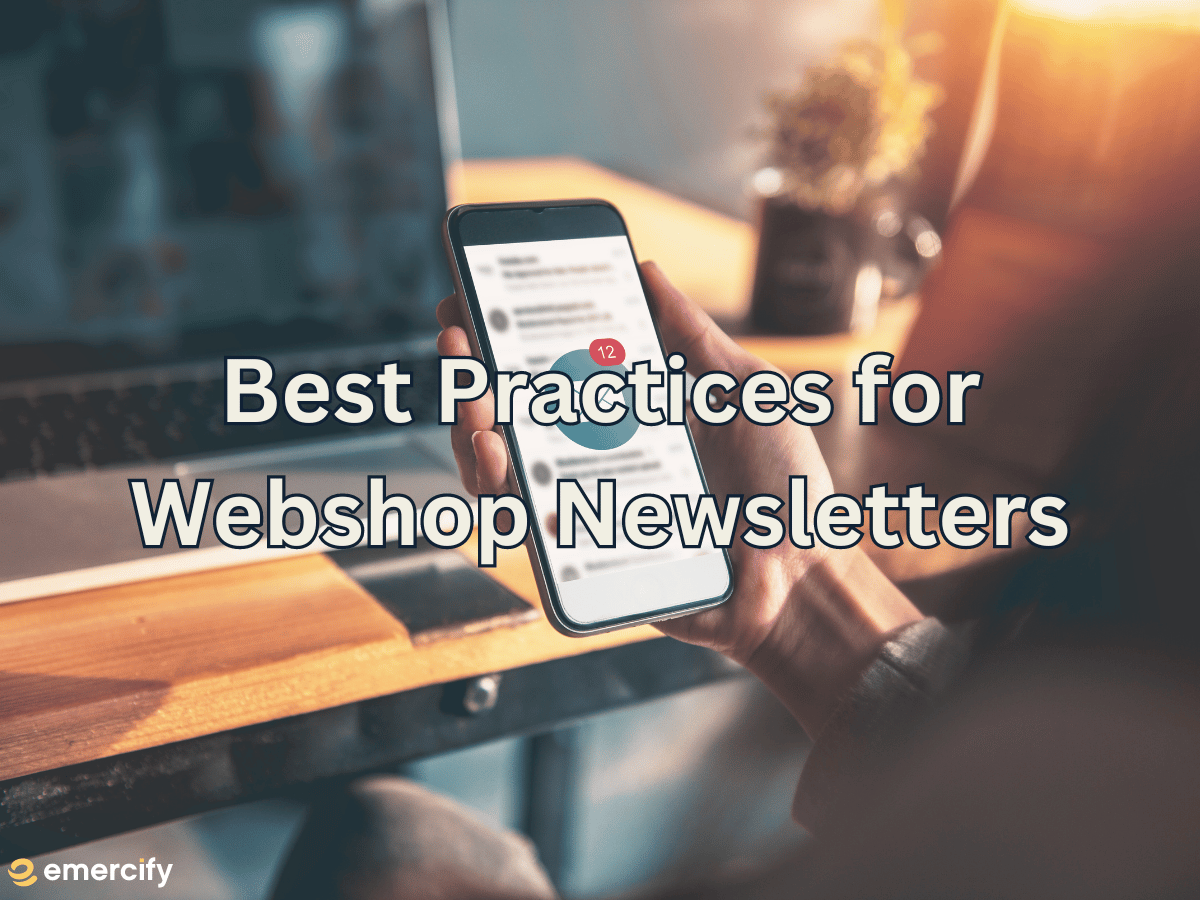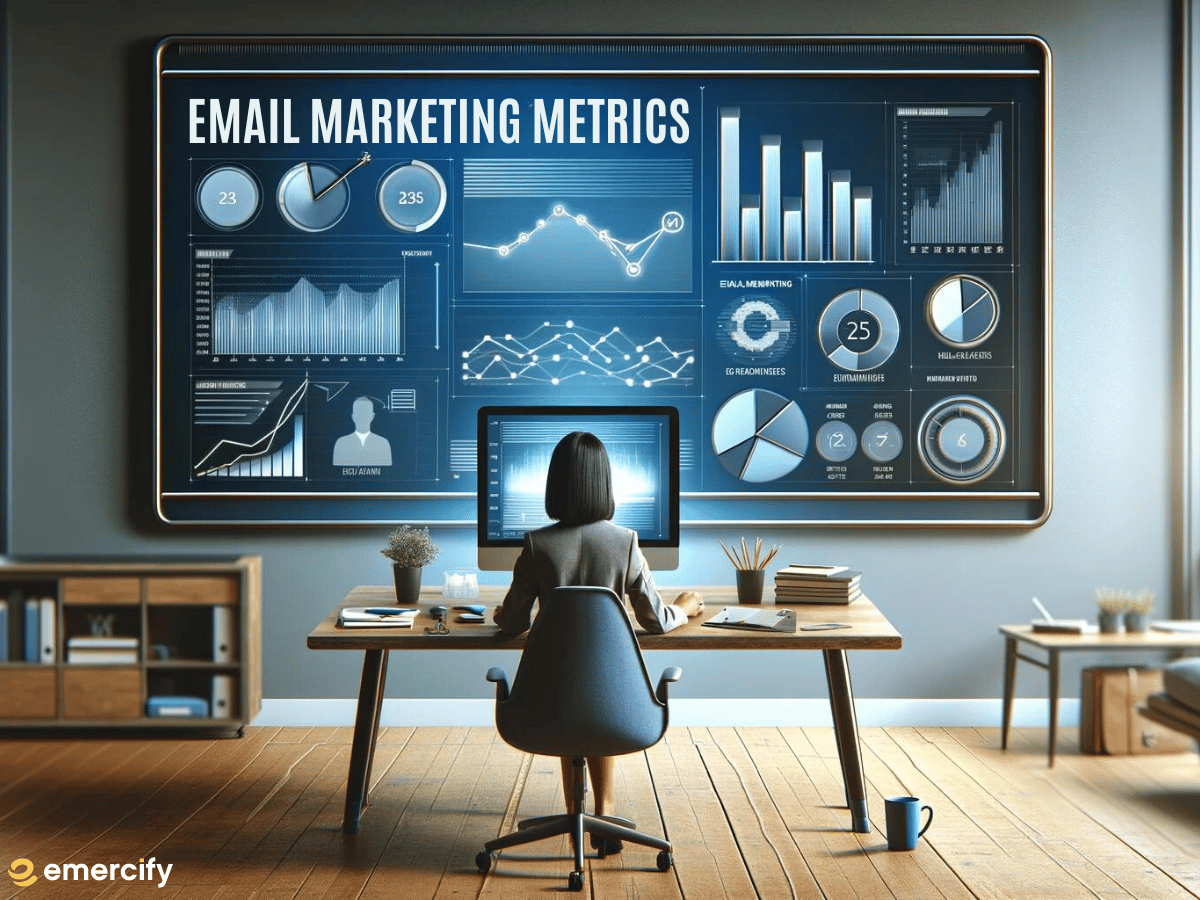Best Practices for Webshop Newsletters

In the fast-paced world of e-commerce, a webshop's success is often tied to its ability to engage customers effectively. One great way to do this is through the use of newsletters. Among the variety of marketing tools available, newsletters stand out as a powerful means to connect with your audience. Crafting a compelling newsletter strategy can significantly impact customer retention, conversion rates, and overall business growth. What does this mean? Email marketing is NOT dead and can be extremely effective for your business. In this article, we'll delve into the best practices that every webshop should adopt when using newsletters.
1. Build a Captivating Subscription Process
A good newsletter strategy begins with acquiring subscribers. Ensure that your subscription process is seamless, user-friendly, and incentivized. Make it easy for people to subscribe to your newsletter. Use compelling CTAs (Call-to-Actions) and clearly communicate the value subscribers will receive. Consider offering exclusive discounts or early access to products to sweeten the deal. Use a form field on your website that people can easily fill out. They will get added to your mailing list, and you can have it add a tag so people who fill out that form can be added to your CRM with the specified tag, which makes segmentation easier.
2. Segment Your Audience Strategically
Not all customers are the same, and treating them as such can lead to disengagement. Segment your audience based on their preferences, purchase history, or demographics. Tailor your newsletters to specific segments, delivering content and promotions that resonate with each group. This can be done through personalization tokens or special mail tokens available in most email marketing platforms. This means you can personalize your emails easily and effortlessly. Personalization is key to fostering a sense of connection and making your customers feel as though your messaging was crafted for them specifically.
3. Craft Compelling and Relevant Content
The content of your newsletters should be a perfect blend of informative and entertaining. Share valuable insights, industry trends, and tips related to your products. Use engaging visuals, such as high-quality images and videos, to capture attention. Mix product highlights with lifestyle content to keep your audience interested. Some newsletters also sprinkle in some humor or personal stories to help build connections with your audience. And use newsletters to update your audience on events and special offerings you may have coming up.
4. Optimize for Mobile Experience
With a growing number of users accessing emails on their mobile devices, it's crucial to optimize your newsletters for mobile responsiveness. Ensure that your content is easily readable on smaller screens and that CTAs are well-placed and clickable. Get into the habit of previewing your emails and newsletters in mobile view. This will help you see what type of user experience your mobile users will have. This can help you make the experience smooth and easy to use. A seamless mobile experience enhances user engagement.
5. Establish a Consistent Sending Schedule
Consistency builds trust. Define a regular sending schedule for your newsletters, whether it's weekly, bi-weekly, or monthly. Note: some brands do a quarterly newsletter. Pick what works for you and your brand. Try to stick to your schedule to create anticipation among subscribers. However, be cautious not to overwhelm them with excessive emails, as this can lead to unsubscribes. Brands will often test out different send times to test when the best time to send is for their respective audiences. This will help you develop a sending schedule that works best for your brand and your audience. The biggest advice to offer is test, test, test until you find what works best.
6. Encourage Social Sharing
Leverage the power of social media by incorporating social sharing buttons in your newsletters. Encourage subscribers to share your content with their networks, expanding your reach organically. Consider running social media contests or promotions exclusive to newsletter subscribers to boost sharing. Any brand that is successful knows that an overall marketing strategy is going to be made up of different components: email marketing, social media, direct messaging, and more. Use your newsletters and social media to drive more outreach, awareness, and engagement for your brand.
7. Monitor and Analyze Performance Metrics
Regularly analyze key performance metrics, including open rates, click-through rates, and conversion rates. If you struggle with this, you can always outsource this to someone who specializes in data analytics and who can help you gain a better understanding of what the data is telling you. Use this data you gathered to refine your strategy, identifying what works best for your audience. A data-driven approach allows you to make informed decisions and optimize your newsletters for better results.
8. Implement A/B Testing
Experimentation is crucial for continuous improvement. Conduct A/B testing on various elements of your newsletters, such as subject lines, visuals, and CTAs. Time to reiterate the philosophy of test, test, test. A/B testing allows you to see how your audience responds to certain elements which can help you craft and fine-tune an email that your audience will love. This iterative process helps you understand what your audience resonates with and how to adjust your strategy accordingly.
9. Prioritize Email Deliverability
Ensure that your newsletters actually reach your subscribers' inboxes by focusing on email deliverability. Maintain a clean and updated email list, use a reputable email service provider, and avoid practices that can trigger spam filters. Note: some words can trigger the spam filters. Always double-check your copy to make sure it doesn’t have any of those spam words (a quick internet search can help you find a list of spam words to not include in your email). A good practice is to do a database clean-up every few months to clean out your lists and segments. Maintaining good lists with an active subscriber base means your emails are more likely to be trusted by your audience and more likely to be delivered into an inbox rather than the dread promotions tab (or worse: spam!). A high deliverability rate is essential for the success of your email marketing efforts.
10. Provide Easy Unsubscribe Options
While you aim to retain subscribers, it's equally important to provide easy and transparent options for unsubscribing. Note: this is a legal requirement. You have to provide users with a clear option for both opt-ins and opt-outs. This builds trust and ensures compliance with email marketing regulations. A hassle-free unsubscribe process can leave a positive impression even when customers decide to opt-out.
Newsletters Connect You To Your Audience
Mastering the art of webshop newsletters involves a strategic blend of technical optimization, engaging content creation, and continuous analysis. Newsletters are a great way to keep your audience informed, connected, and engaged with your brand. It can also work seamlessly with your other strategies, making your overall digital marketing approach one that works best for your brand. By implementing these best practices, your webshop can build a loyal subscriber base, foster customer relationships, and drive sustained business growth.
Do you send out newsletters? Why or why not?





